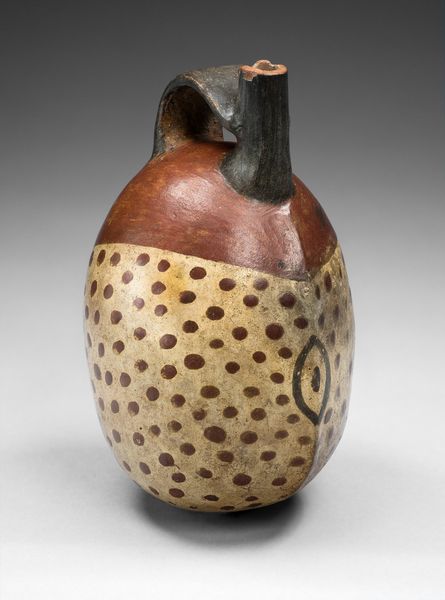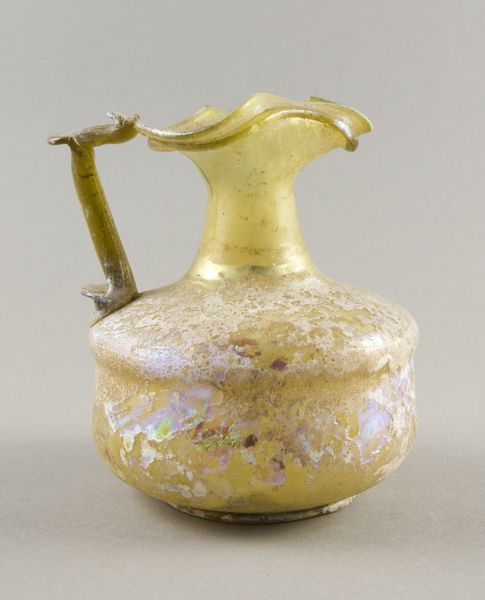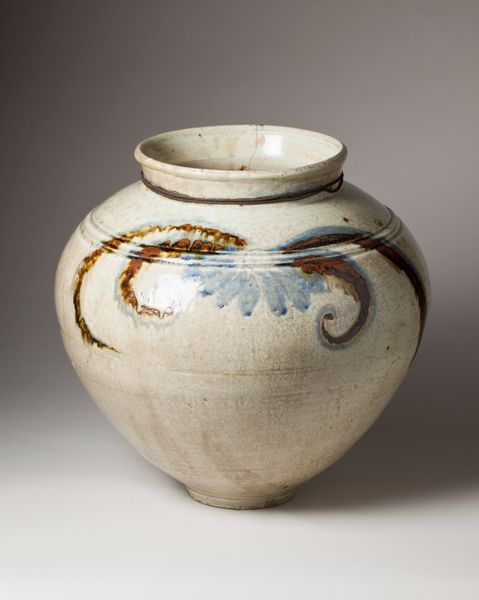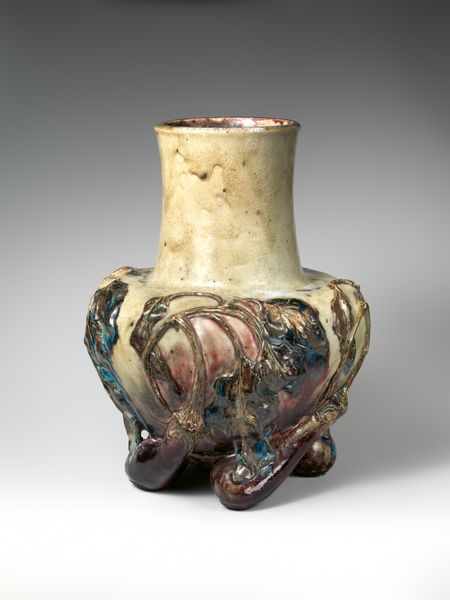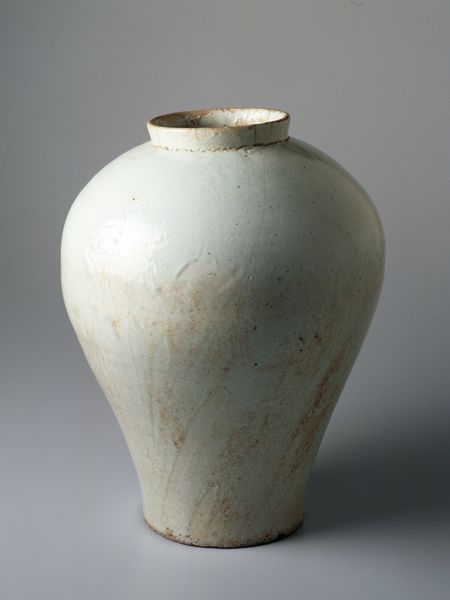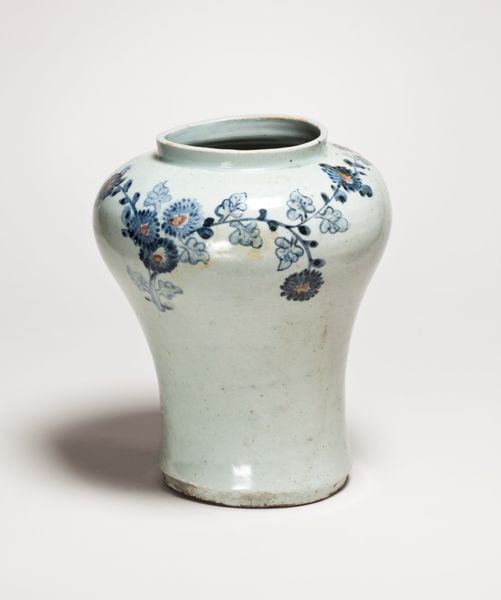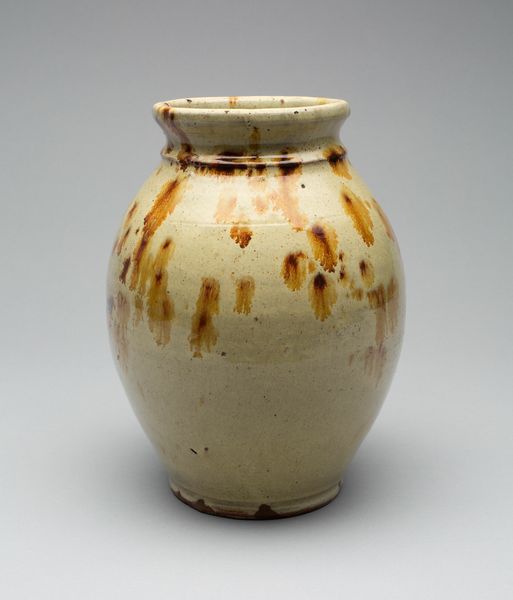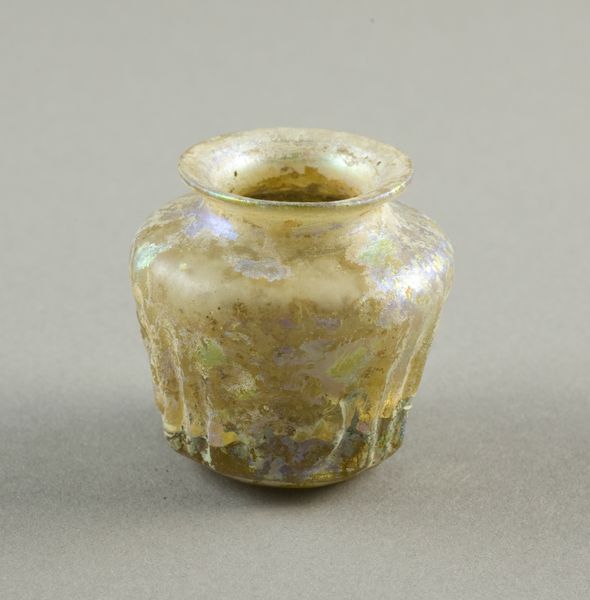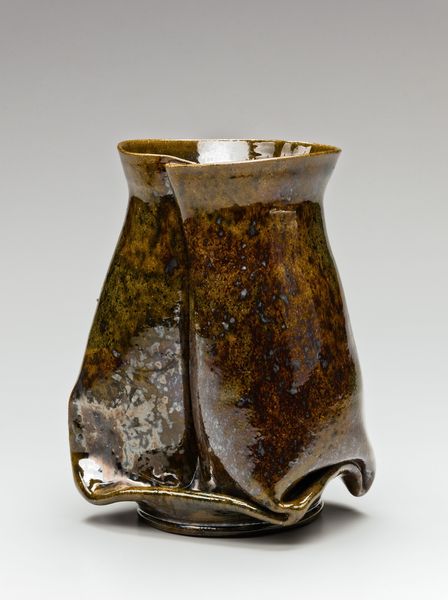
ceramic, earthenware, sculpture
#
ceramic
#
earthenware
#
sculpture
#
ceramic
#
decorative-art
Dimensions: Bottom: 11.4 × 17.2 cm (4 1/2 × 6 3/4 in.) Top: 20 × 17.5 cm (7 7/8 × 6 7/8 in.) Overall: 30.6 × 17.5 cm (12 1/16 × 6 7/8 in.)
Copyright: Public Domain
Editor: This earthenware jar, made by Svend Hammershøi in 1895 and held at The Art Institute of Chicago, is quite charming! The glaze has a somewhat imperfect, handmade quality to it. What can you tell us about its materiality and the story it tells? Curator: The seemingly simple construction of this ceramic piece actually speaks volumes. Consider the artist's choice of earthenware – a readily available and relatively inexpensive material. It signals a departure from the preciousness often associated with "high art". Note how the labor isn't hidden: you see the hand of the maker, the imprecision. What does this suggest about Hammershøi’s intent? Editor: Perhaps he wanted to elevate craft, to bring it into the realm of art? The animal figure at the top reinforces this. Curator: Precisely. By integrating a somewhat naive animal form as the handle, he blurs the lines between functional object and sculptural artwork. It questions traditional hierarchies within art, pushing us to consider the value assigned to different forms of making. Look at the repeated circular pattern, almost like thumbprints. Editor: So, the jar is not just about its aesthetic appeal, but also about the artist’s statement on artistic production and the dignity of labor? Curator: Absolutely. Hammershøi seems interested in making visible the usually invisible process, almost a quiet form of rebellion against academic artistic conventions. The imperfections themselves become the message, highlighting process and the social dimensions of creation, disrupting consumption patterns associated with fine art. Editor: That gives me a completely different appreciation for its creation. Thank you, it really does prompt one to think! Curator: My pleasure. Paying attention to the process unveils a new lens to interpret not only art, but the socioeconomic factors affecting it as well.
Comments
No comments
Be the first to comment and join the conversation on the ultimate creative platform.
